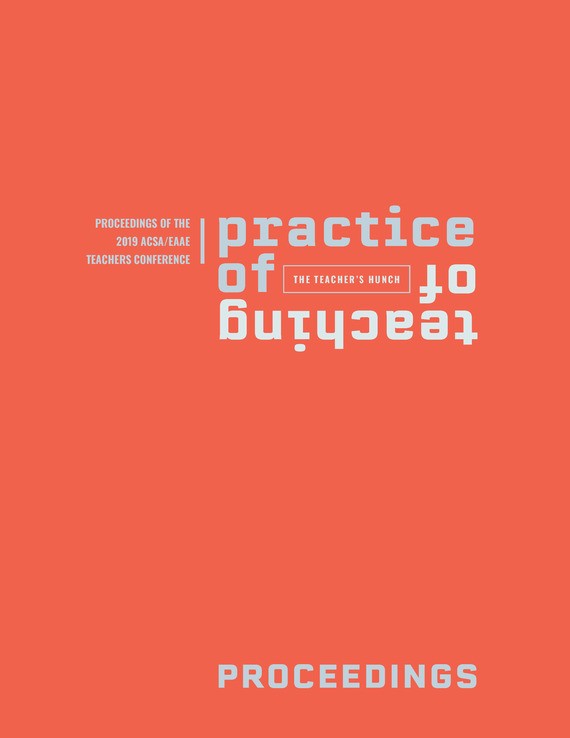Author(s): Theodora Vardouli & François Sabourin
It is an oft-made claim that digital computers are changing architectural discourse and professional practice. These changes are plural, varied, and often prosaic. They do not fit one definition of “digital architecture”, nor one manifesto of “digital revolution.” While historians, theorists, and ethnographers of architectural practice are beginning to map the disciplinary valencies and professional effects of digital computers, architectural curricula grapple with questions about when, where, how, and why to introduce computers in an architecture student’s education.1 Professionally accredited architecture curricula negotiate a stifling demand for student proficiency in various kinds of commercial software, with the broader pedagogical possibilities that emerge from the many variances of computational design and making.2 In the parts of a curriculum that integrate a “digital” component, this negotiation usually manifests as a dilemma between training students in software skills and teaching computational processes of thinking, designing, and making architecture. In courses that teach software, computational techniques are often hidden, or “black boxed,” behind the screen. Students deploy them indirectly (through software interfaces) to produce drawings, output construction documents, simulate, and analyze a design’s various performances. Meanwhile, in courses that focus on computational thinking and making, rules and algorithms are out in the open and take on an active role in the creation of architectural space and form.These two approaches echo distinct attitudes toward design processes themselves that surrounded early work on design and computing. In a report on the first international conference of the Design Methods Group—a North American “coalition” of researchers working on “rational” theories and methods of environmental design,3 often through the use of digital computers—architect and urban designer Jonathan Barnett called these two attitudes “black box” and “glass box.”4 “Glass box” approaches were concerned with an analyti-co-mathematical rendition of the design process—asking the question of whether architectural design, or rather which parts of it, could be conceived as a kind of computation: a step-wise process amenable to logico-mathematical description and analysis. Examples of “glass box” work included systematic methods for “fitting” geometric form to functional goals and various methods for enumerating possible geo-metric configurations based on certain rules and constraints, broadly falling under the label of “generative design.” “Black box” approaches, on the other hand, aspired to enhance specific tasks that designers faced in a traditional process through the aid of new graphical and interactive technologies. “Black box” examples included computer aids of different kinds, from drafting tools to conversational interfaces that informed the designer about the impacts of their decisions. In other words, “glass box” approaches recast design as a kind of computation (a step-wise, algorithmic process), while “black box” approaches used computation as a tool for various familiar design tasks.
https://doi.org/10.35483/ACSA.Teach.2019.26
Volume Editors
Richard Blythe & Johan De Walsche
ISBN
978-1-944214-23-4

 Study Architecture
Study Architecture  ProPEL
ProPEL 
